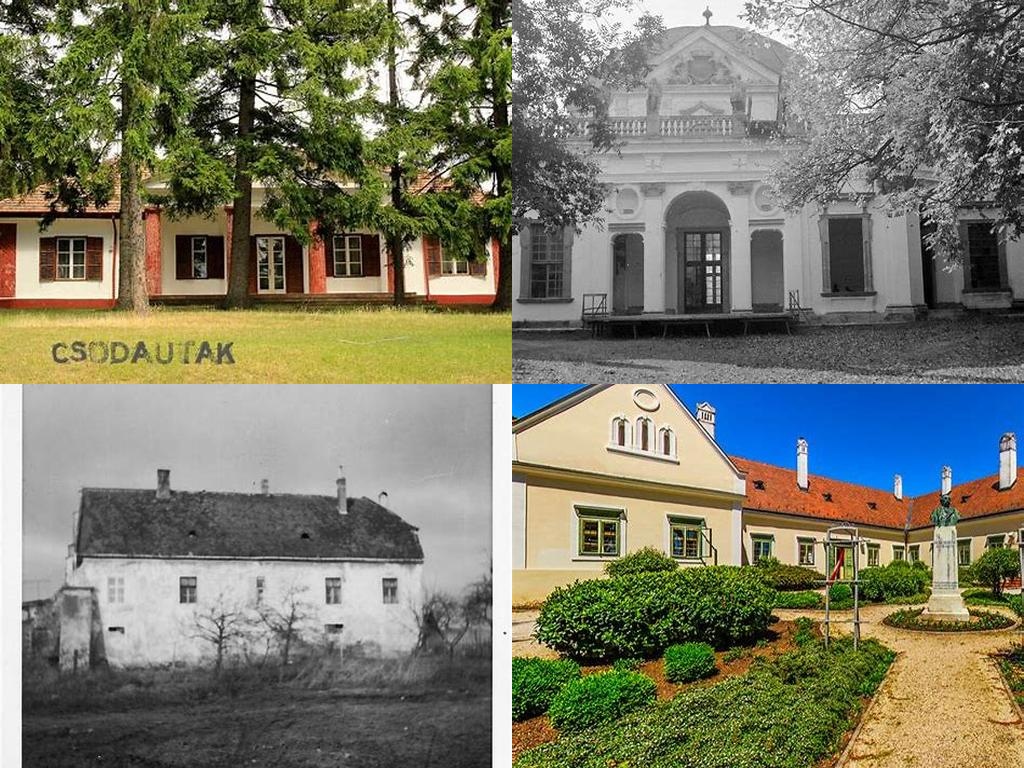
Keczer-kúria sits quietly in the village of Alsóregmec, tucked away in northeastern Hungary, just waiting for someone to notice its very particular charm. While you may not find it on every glossy travel brochure, the mansion’s gentle walls and sprawling green grounds hold traces of stories that reach back centuries. There is something about approaching this dignified, baroque-inspired residence—shaded by old trees and framed by gently rolling hills—that feels like stepping into a slower, more reflective time. The air carries a hush that’s part nostalgia, part deep countryside peace. If you’re the type who enjoys places where history is felt in the creak of a floorboard or glimpsed in the delicate lines of aging stucco, this is a place you’ll want to spend the afternoon.
The story of Keczer Mansion begins back in the latter half of the 18th century, when it was built by the Keczer family—a family closely woven into the social fabric of both Borsod-Abaúj-Zemplén County and Hungary itself. The Keczer clan had deep roots as landowners and local notables, and they shaped the mansion into something both beautiful and functional, serving as both home and, more broadly, as the symbolic heart of the estate. They gave the mansion its characteristic baroque nuances: the symmetry of its facades, the grace of decorative pilasters, and the tall, arched windows that let in the rural sunlight. Yet, it was never a place of ostentation. The Keczer-kúria feels attuned more to the practical dignity of country living than to grand gestures, echoing the agricultural rhythms of the fields beyond its gardens.
In the centuries that followed, the building has seen not just the genteel domestic life of landed families, but also the wear and tear of changing times. Like many Hungarian manor houses, it experienced shifts in ownership and use especially after World War II, when the tides of history swept away most private estates to be repurposed for public or cooperative life. The mansion has served as a residence, a local administrative center, and even a school at different points. Its rooms have gently absorbed these layered histories, leaving traces in the faded paint, the softly worn thresholds, and the occasional piece of salvaged furniture. When you stand in the echoing hallways, you almost expect to overhear snatches of piano notes or the laughter of children. For those fascinated by sites that live multiple lives, this is a rare and rewarding find.
If you wander back behind the main house, you’ll find a park filled with centuries-old trees—elms, maples, chestnuts—that shelter the grounds in a cool, leafy embrace. The gardens aren’t grand or manicured in any showy way, but they have a natural, lived-in beauty. If you come in spring, everything bursts with green. In autumn, the color is soft and golden, and the air is full of birds. This is a place made for wandering, for the kind of slow walks that allow you to notice crumbling but lovely stonework, a forgotten garden bench, or wildflowers growing along the old gravel paths. There’s a kind of landscape poetry here, helped along by the tranquility that lingers long after the last guest has gone inside.
What makes Alsóregmec and its Keczer Mansion especially captivating is how seamlessly they fit into the surrounding region’s rhythm. This is an area overlooked by most travelers—yet all the more rewarding for its privacy. Beyond the mansion, you can explore the wider Zemplén Mountains, dotted with vineyards, quiet woods, and tiny villages where time seems to slow. Local history buffs will enjoy tracing the connections between the mansion’s past owners and broad turns in Hungarian politics and society. But even if you aren’t versed in genealogy or architectural history, the simple act of sitting beneath the chestnut trees, watching the light change over the old windows, is an experience all its own.
In the end, Keczer-kúria is less a destination for crowds and more a place for curious wanderers and thoughtful guests. Its history doesn’t shout; it lingers and invites reflection. While its best stories are hidden in the quiet corners and shadows, those who take the time to visit will find a rare kind of peace and an authentic glimpse into rural Hungary’s layered past. Bring a notebook or a camera, if you’d like—but mostly, just bring time to linger.





